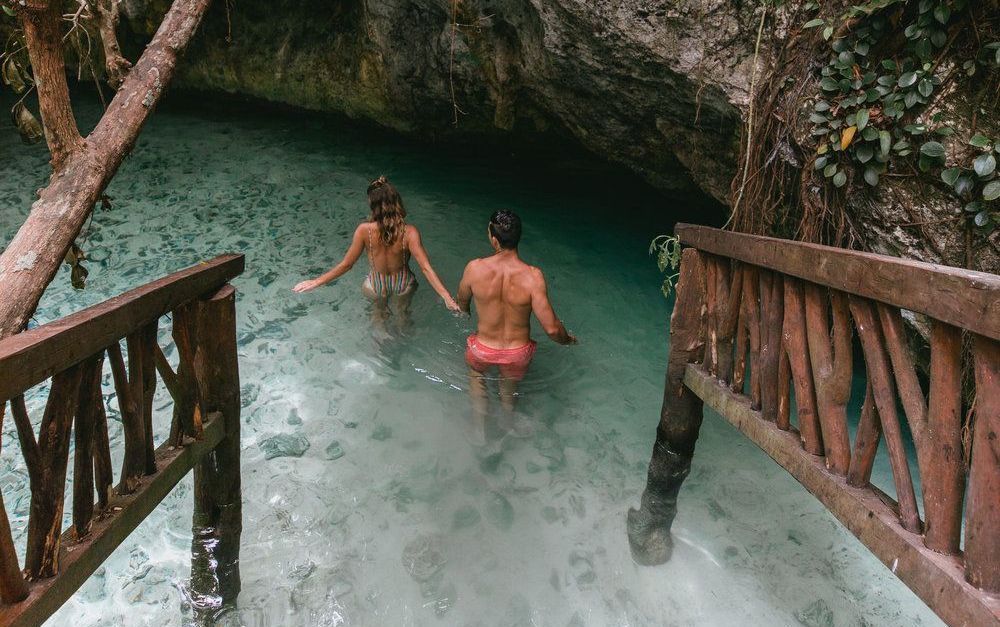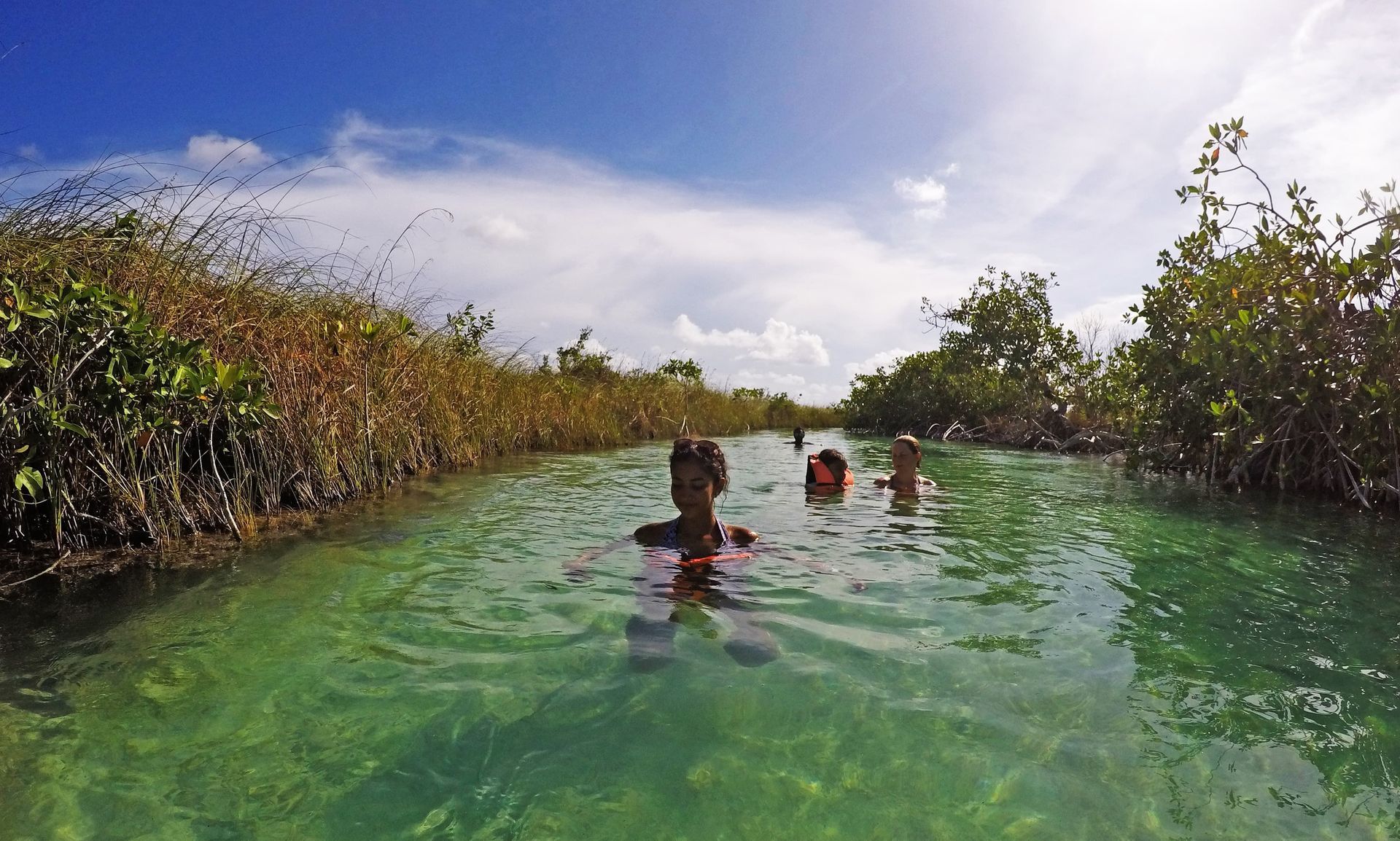Explore Tulum: Best Things to Do in Mexico’s Caribbean Paradise
Explore Tulum: Best Things to Do in Mexico’s Caribbean Paradise
Tulum, located on Mexico’s Yucatán Peninsula, is a breathtaking destination that blends natural beauty with rich cultural history. Known for its stunning beaches, crystal-clear cenotes, and well-preserved ancient Mayan ruins, Tulum offers visitors a unique mix of relaxation and adventure. This Caribbean paradise is not just a haven for beach lovers but also a significant cultural site that showcases the grandeur of the Mayan civilization. From its eco-friendly resorts to its vibrant nightlife and delicious local cuisine, Tulum is a place where you can immerse yourself in both nature and history. Among its many attractions, Casa Cenote stands out as a top travel destination, offering a unique experience of swimming and snorkeling in an open-air cenote surrounded by lush mangroves.
1. Explore the Tulum Ruins
The Tulum Ruins are one of the most iconic and historically significant sites in Mexico. Perched on a cliff overlooking the turquoise waters of the Caribbean Sea, these ancient Mayan ruins offer a glimpse into the past while providing breathtaking views.
Historical Significance: The Tulum Ruins date back to around 1200-1450 AD and were once a thriving port city. They are one of the best-preserved coastal Mayan sites and provide valuable insights into the Mayan civilization's trade practices and daily life.
Key Structures:
- El Castillo (The Castle): The most prominent structure, El Castillo served as a lighthouse to guide Mayan sailors. Its strategic location on the cliff edge offers panoramic views of the sea and the surrounding area.
- Temple of the Frescoes: This temple features well-preserved murals depicting Mayan deities and cosmology. It's a testament to the artistic skills and religious beliefs of the Mayan people.
- Temple of the Descending God: Named for the unique figure carved above its entrance, this temple is dedicated to the Descending God, a deity associated with fertility and abundance.
Tips for Visiting:
- Arrive Early: To avoid the crowds and the midday heat, visit the ruins early in the morning. This also provides the best lighting for photography.
- Guided Tours: Consider hiring a guide to gain deeper insights into the history and significance of the ruins.
- Bring Water and Sunscreen: The site is exposed with little shade, so stay hydrated and protected from the sun.
2. Swim in the Gran Cenote

Gran Cenote is one of Tulum's most famous cenotes, offering an unforgettable experience for swimmers and snorkelers alike. This natural sinkhole, filled with crystal-clear freshwater, is surrounded by lush greenery and underground caverns, making it a magical place to explore.
What is a Cenote?
Cenotes are natural sinkholes resulting from the collapse of limestone bedrock, exposing groundwater underneath. They are unique to the Yucatán Peninsula and were considered sacred by the ancient Mayans, who believed they were portals to the underworld.
Highlights of Gran Cenote:
- Crystal Clear Waters: The waters of Gran Cenote are incredibly clear, allowing for excellent visibility. This makes it perfect for swimming, snorkeling, and even scuba diving.
- Rich Marine Life: The cenote is home to a variety of fish and turtles. Snorkelers can enjoy the sight of these creatures in their natural habitat.
- Stalactites and Stalagmites: The cenote features fascinating rock formations both above and below the water. These natural structures add to the cenote's mystical ambiance.
- Caves and Caverns: The underwater caves and caverns are a highlight for divers and adventurers, providing a unique opportunity to explore the cenote's depths.
Tips for Visiting:
- Arrive Early: To avoid the crowds and have a more peaceful experience, visit early in the morning.
- Equipment Rental: Snorkeling gear can be rented on-site, but bringing your own gear is also a good option.
- Respect the Environment: Cenotes are delicate ecosystems. Avoid using sunscreen or other products that can contaminate the water. Consider using biodegradable sunscreen if necessary.
- Safety First: Always follow safety guidelines, especially if you plan to dive into the cenote’s deeper areas.
3. Relax on Tulum Beach

Tulum is renowned for its pristine, powdery white-sand beaches that stretch along the Caribbean coast. These beaches are perfect for those looking to unwind and soak up the sun in a picturesque setting.
Beach Highlights:
- Playa Paraiso: Often hailed as one of the most beautiful beaches in the world, Playa Paraiso features soft white sand and calm, turquoise waters. It's an ideal spot for swimming, sunbathing, and taking in the stunning views.
- Playa Ruinas: Located just below the Tulum Ruins, this beach offers a unique blend of history and natural beauty. The view of the ancient ruins from the beach adds a magical touch to your beach day.
- Las Palmas Public Beach: A quieter option, this beach is perfect for those seeking a more serene environment. It's less crowded than Playa Paraiso but equally beautiful.
Activities:
- Sunbathing: Stretch out on the soft sand and bask in the warm Caribbean sun.
- Swimming: The clear, gentle waters of Tulum's beaches are perfect for a refreshing swim.
- Beachfront Dining: Enjoy delicious meals at the many beachside restaurants and bars, offering everything from fresh seafood to traditional Mexican dishes.
Tips for Visiting:
- Bring Essentials: Pack sunscreen, a hat, and plenty of water to stay hydrated and protected from the sun.
- Respect Nature: Tulum's beaches are known for their natural beauty. Help preserve this by not littering and respecting the local wildlife.
- Stay for Sunset: The sunsets in Tulum are spectacular. Stay until evening to witness the sky transform into a canvas of vibrant colors.
4. Discover Sian Ka’an Biosphere

Reserve The Sian Ka’an Biosphere Reserve is a UNESCO World Heritage Site and one of the largest protected areas in Mexico. It encompasses a diverse range of ecosystems, including tropical forests, mangroves, marshes, and a part of the Mesoamerican Barrier Reef.
Introduction to the Reserve: Sian Ka’an, meaning "Origin of the Sky" in the Mayan language, is home to a rich variety of flora and fauna. The reserve covers over 1.3 million acres and provides a habitat for numerous endangered species, making it a haven for nature lovers and wildlife enthusiasts.
Activities Available:
- Wildlife Tours: Join guided tours to spot exotic animals like jaguars, pumas, monkeys, and a myriad of bird species. Birdwatching is particularly popular here, with the chance to see rare and migratory birds.
- Kayaking and Canoeing: Explore the reserve's intricate network of mangroves and lagoons by kayak or canoe. This offers a peaceful and intimate way to experience the area's natural beauty.
- Snorkeling and Diving: The reserve includes part of the Mesoamerican Barrier Reef, the second-largest coral reef system in the world. Snorkeling and diving excursions provide a close-up look at vibrant coral formations and marine life.
- Fishing: Sian Ka’an is an excellent location for catch-and-release sport fishing. Anglers can fish for species like bonefish, tarpon, and permit.
- Eco-Tours: Participate in eco-friendly tours that focus on conservation and sustainability. These tours often include educational components about the local ecosystem and efforts to protect it.
Tips for Visiting:
- Book in Advance: Tours can fill up quickly, so it's advisable to book your activities ahead of time.
- Wear Appropriate Clothing: Light, breathable clothing is best for exploring the reserve. Don’t forget insect repellent and a hat to protect from the sun.
- Respect Wildlife: Keep a safe distance from animals and avoid disturbing their natural habitats.
- Stay Hydrated: Bring plenty of water, as the tropical climate can be quite humid and hot.
5. Snorkel or Dive in the Mesoamerican Barrier Reef

The Mesoamerican Barrier Reef, also known as the Great Mayan Reef, is the second-largest coral reef system in the world, stretching over 600 miles from the northern tip of the Yucatán Peninsula to the Bay Islands of Honduras. Tulum, located along this spectacular reef, offers some of the best snorkeling and diving experiences in the region.
Information about the Reef: The Mesoamerican Barrier Reef is home to an incredible diversity of marine life, including hundreds of species of fish, coral, and other sea creatures. The vibrant coral formations, underwater caves, and abundant marine life make it a paradise for snorkelers and divers.
Best Places to Snorkel or Dive:
- Dos Ojos Cenote: This cenote offers a unique snorkeling and diving experience with its clear waters and extensive cave system. The name "Dos Ojos" means "Two Eyes," referring to the two connected cenotes that create a stunning underwater landscape.
- Cenote Calavera: Known as the "Temple of Doom," this cenote offers an adventurous diving experience with its deep, dark waters and striking rock formations. It's a popular spot for both beginners and experienced divers.
- Cenote El Pit: This cenote is one of the deepest in the area, offering a dramatic diving experience with its deep blue waters and impressive stalactite formations. It's a great spot for advanced divers looking for a challenging dive.
Snorkeling and Diving Highlights:
- Coral Gardens: The reef is home to vibrant coral gardens teeming with life. Snorkelers can float above the reef and marvel at the colorful coral formations and the myriad of fish that call the reef home.
- Marine Life: The reef is home to a diverse array of marine life, including sea turtles, rays, and a variety of tropical fish. Divers can explore the deeper waters and encounter larger marine species like nurse sharks and eagle rays.
- Underwater Caves: The reef is dotted with underwater caves and tunnels, offering a unique and thrilling experience for divers. These caves are filled with fascinating rock formations and provide a sense of adventure and exploration.
Tips for Visiting:
- Choose a Reputable Dive Shop: There are many dive shops in Tulum that offer snorkeling and diving tours. Choose a reputable shop with experienced guides to ensure a safe and enjoyable experience.
- Bring Underwater Camera Gear: The reef is incredibly photogenic, so bring underwater camera gear to capture the beauty of the coral and marine life.
- Follow Conservation Guidelines: The reef is a delicate ecosystem, so follow conservation guidelines to help protect it. Avoid touching the coral or disturbing marine life, and use reef-safe sunscreen.
6. Visit Casa Cenote Casa
Cenote, also known as Cenote Manatí, is a unique natural attraction located just a short drive from Tulum. This open-air cenote is connected to the ocean through a series of underground caves, creating a blend of fresh and saltwater that supports a diverse range of marine life.
Unique Aspects of Casa Cenote:
- Mangrove Surroundings: Casa Cenote is surrounded by lush mangroves, creating a serene and picturesque environment. The mangroves also provide habitat for various bird species and other wildlife.
- Clear Blue Waters: The cenote’s waters are incredibly clear, making it an ideal spot for swimming, snorkeling, and diving. The visibility allows you to see the fascinating underwater rock formations and marine life.
- Marine Life: The cenote is home to a variety of fish, including tarpon and colorful tropical species. Occasionally, you might even spot a manatee, the gentle creature that gives the cenote its alternate name.
Activities at Casa Cenote:
- Swimming and Snorkeling: The clear waters and calm conditions make Casa Cenote perfect for swimming and snorkeling. You can explore the underwater caves and spot various fish and aquatic plants.
- Diving: For those looking for a bit more adventure, Casa Cenote offers excellent diving opportunities. The underwater cave systems and tunnels provide a unique and exciting experience for divers.
- Kayaking: Kayaking through the cenote and its surrounding mangroves is a peaceful way to explore the area. It offers a different perspective and allows you to appreciate the beauty of the cenote from above the water.
Tips for Visiting:
- Bring Your Gear: While you can rent equipment on-site, bringing your own snorkeling or diving gear can ensure a more comfortable experience.
- Visit Early: Like many popular spots, Casa Cenote can get crowded. Visiting early in the morning can provide a quieter and more serene experience.
- Respect the Environment: As with all natural attractions, it's important to respect the environment. Avoid using harmful sunscreens and be mindful of the delicate ecosystem.
- Guided Tours: Consider joining a guided tour to learn more about the cenote's history, geology, and ecology. Guides can also help you navigate the underwater caves safely.


